This hearty, flavorful Mulligan Stew recipe is packed with tender chunks of beef and vegetables, in a thickened beef and tomato broth. It’s a cozy one-pot meal that’s easy to adapt with your favorite veggies or whatever you have on hand!
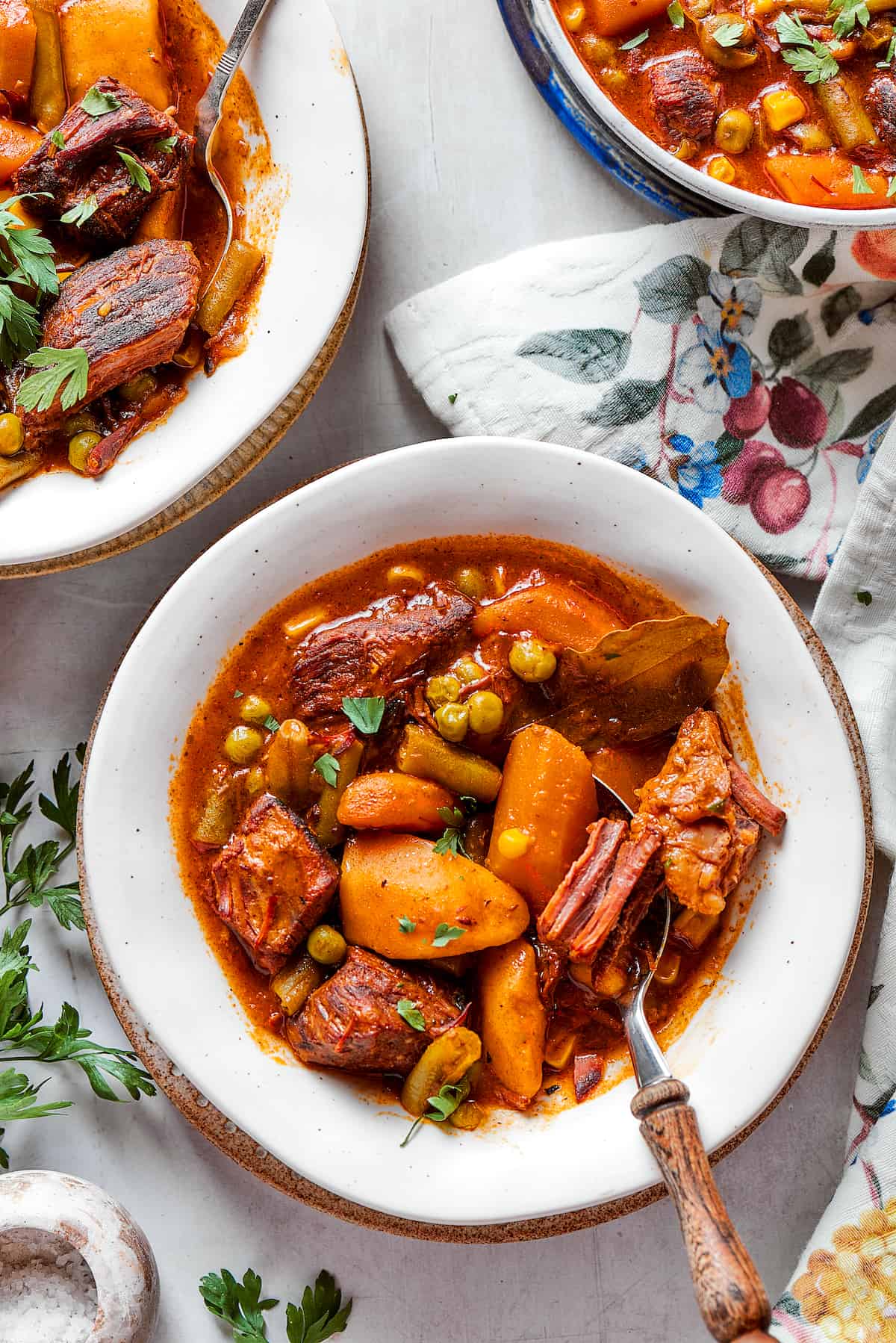
Easy & Hearty Mulligan Stew
When it comes to hearty, flavorful comfort food, this easy Mulligan Stew recipe is a family-pleasing win. With tender chunks of slow-simmered beef and vegetables in a thickened beef and tomato broth, it’s a cozy one-pot meal. We like to serve it with warm cornbread muffins, fluffy dinner rolls, or popovers, for mopping up every last bit of deliciousness!
Why You’ll Love This Mulligan Stew Recipe
The cold-weather months beg for warm-you-up goodness. Here’s why you’ll want to make Mulligan stew all winter long:
- Resourceful & adaptable. A mulligan stew recipe is meant to use up a-little-bit-of-this and a-little-bit-of-that, in your fridge, freezer, and pantry – to not let anything go to waste. Feel free to use any variety of vegetables and ingredients that you like.
- Easy to make. This stew is easy to put together, and it’s made in just one pot.
- Hearty & cozy. The combination of beef and seven different vegetables in a cozy, savory broth will leave you feeling satisfied long after you’ve wiped your bowl clean.

What Is Mulligan Stew?
Mulligan Stew, also called Hobo Stew or Community Stew, originated in the US in the early 1900’s – a product of the Great Depression and the severe drought of the Dirty Thirties.
Hobos, or those who rode the rails looking for work, lived in camps and pulled together all their collected food to create one big stew to share in a communal meal.
There is no fixed recipe for mulligan stew, which makes it an incredibly versatile, adaptable, and resourceful dish. My version of this recipe is hearty and flavorful, but I expect you to alter it to your own liking and what you have on hand!
What Is The Difference Between Irish Stew and Mulligan Stew?
The main difference between Irish stew and mulligan stew is that Irish stew traditionally includes lamb or mutton, while mulligan stew uses beef. Mulligan stew also tends to include a lot more vegetables, as the recipe is meant to be resourceful in cleaning out the fridge, freezer, and pantry – so the recipe is much more flexible.
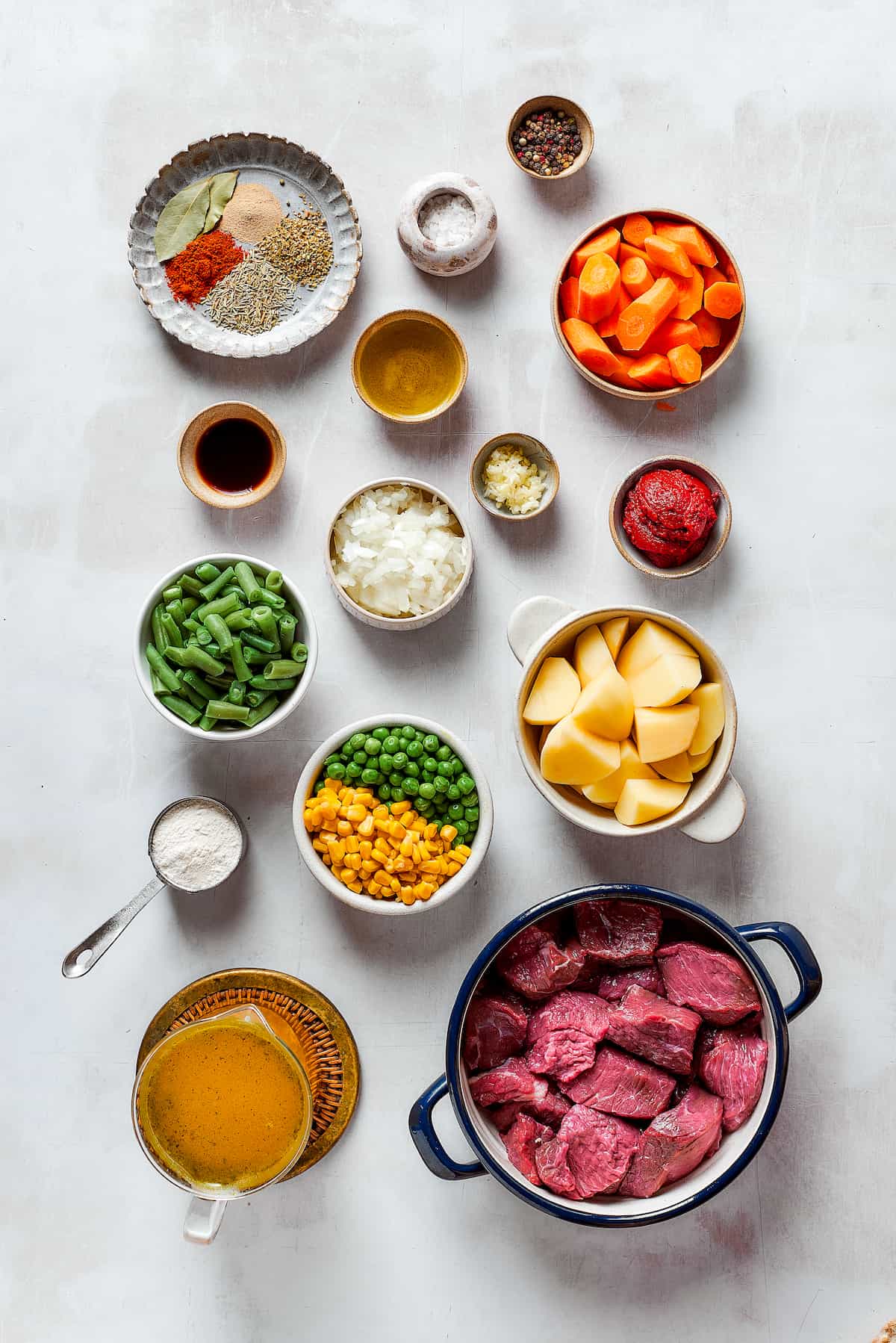
Recipe Ingredients
Here is a rundown of the ingredients you need to make Mulligan stew.
Scroll down to the printable recipe card at the end of this post for the exact ingredient amounts.
- Olive oil – Olive oil is the fat used to brown the meat and cook the vegetables.
- Beef stew meat – This is an affordable and easy-to-find option when making stew.
- Salt & pepper – Salt and pepper add seasoning to the stew.
- Onion – Onion is a must in any stew recipe! I use yellow onion.
- Garlic – For a flavorful, pungent note in the stew.
- Tomato paste – This gives a burst of concentrated tomato flavor to the broth.
- Beef broth – Combined with tomato paste, this creates a rich broth for the stew.
- Worcestershire sauce – This adds a punch of savory, vinegary flavor.
- Flavorings – White (or black) pepper, plus smoked paprika, and dried rosemary, oregano, and bay leaves.
- Potatoes – I like to use creamy Yukon Gold potatoes, but small red potatoes are also good.
- Carrots – These give a sweet, earthy undertone to the stew.
- Green beans – I use frozen green beans for ease of preparation, but fresh green beans are even better.
- Peas – Peas, from frozen, add a nice pop of green sweetness to the stew.
- Corn – Use frozen corn to quickly add another vegetable to Mulligan stew. Fresh sweet corn, cut from the cob, is extra good!
- Cornstarch – This helps to thicken the broth.
- Parsley – This herb is included for a touch of freshness when serving.
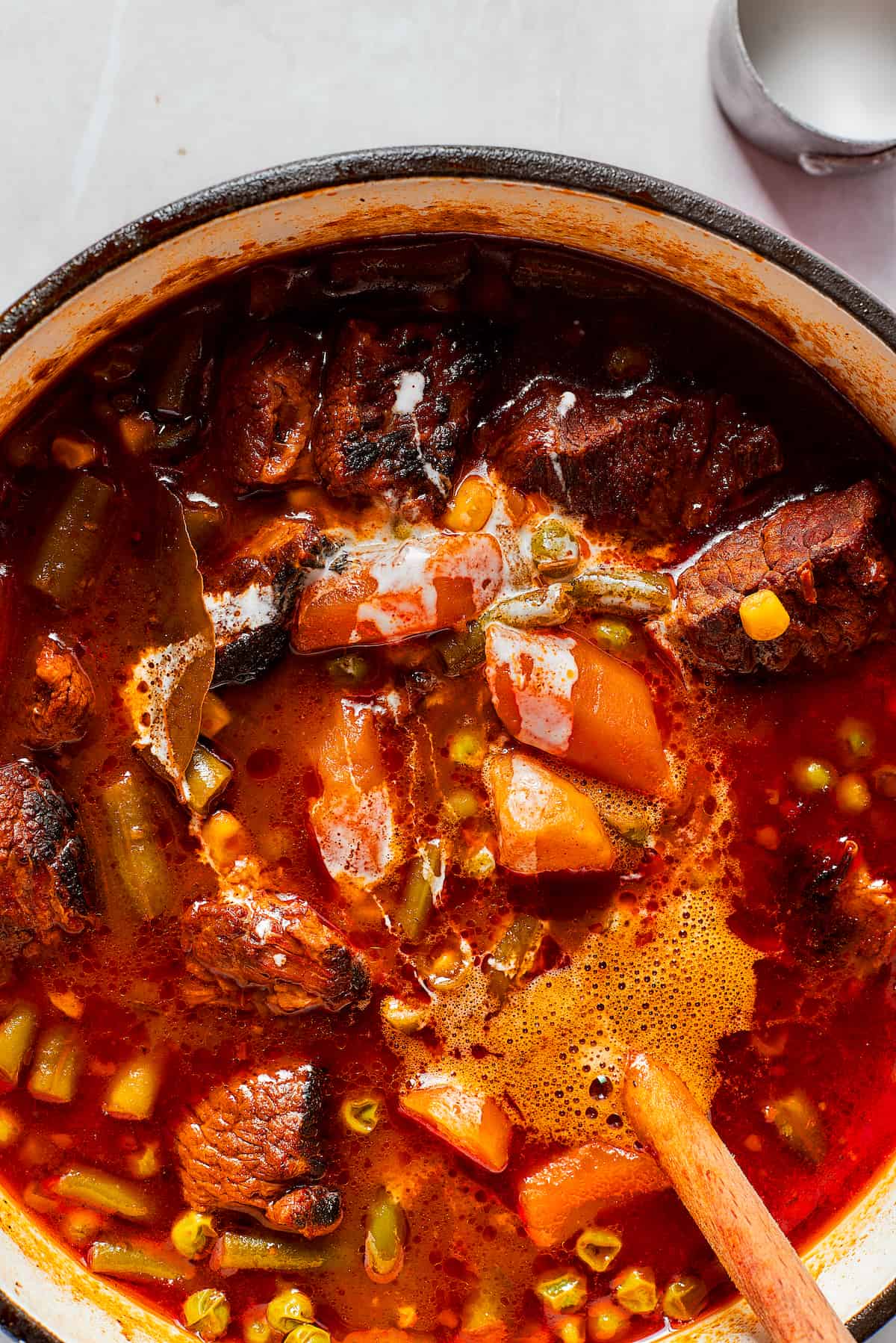
Easy Variations
Make this recipe as-written or mix it up:
- Try different meat. You can make this stew with cubed lamb or pork instead of beef.
- Use fresh vegetables. My recipe calls for some frozen vegetables, but you can absolutely use fresh green beans, peas, and corn if you wish.
- Substitute different vegetables. Play around with the vegetable component depending on what you have in the fridge or what you prefer. For example, include mushrooms, pearl onions, sweet peppers, spinach, butternut squash, or chopped tomatoes.
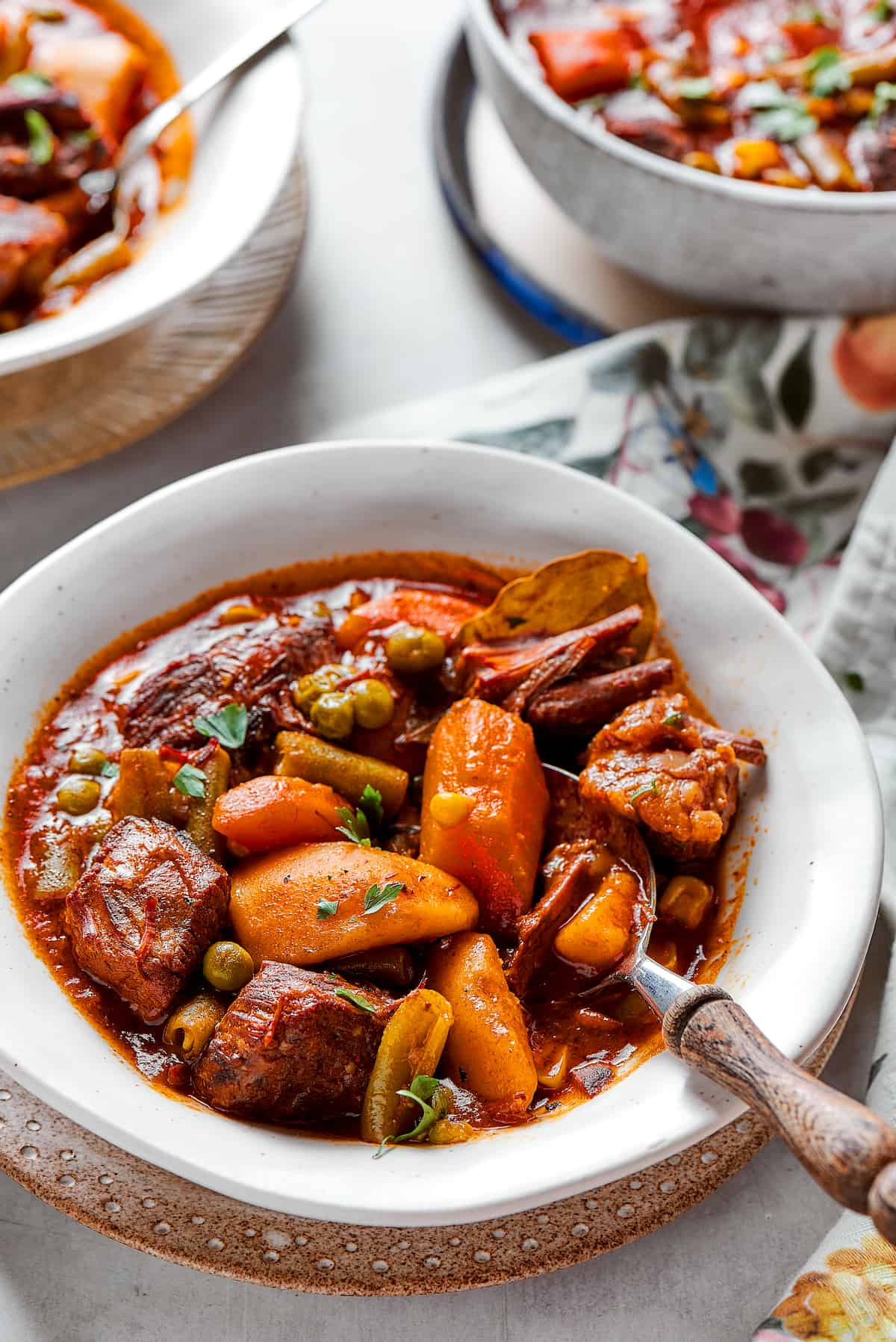
How To Make Mulligan Stew
I love a one-pot meal. Here’s how to make this stew:
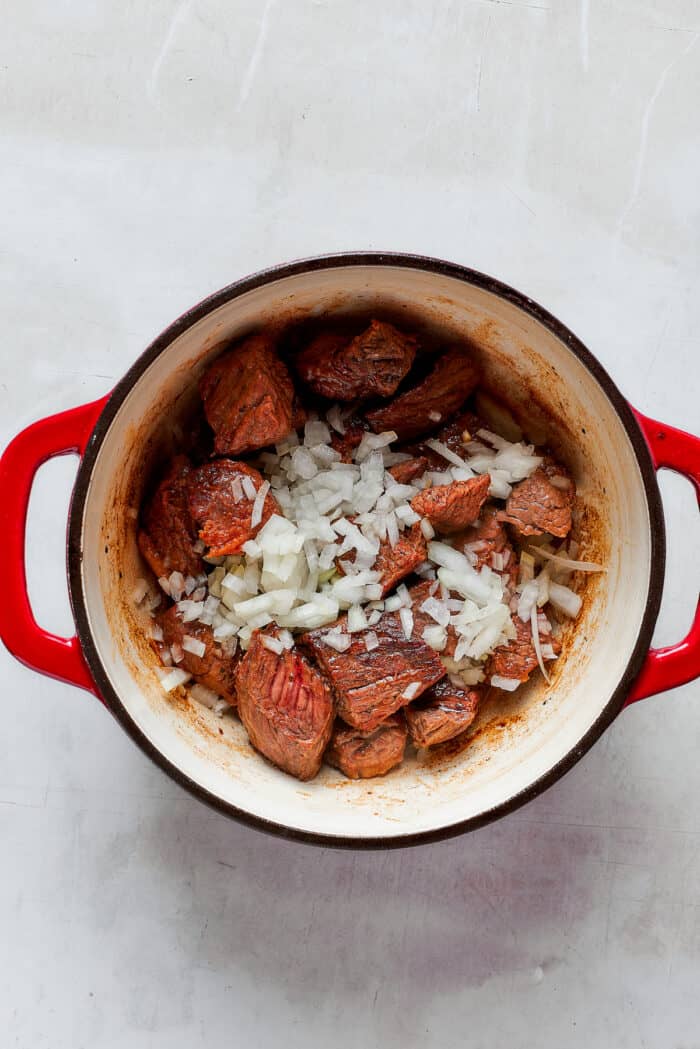
- Cook the beef and onion. Heat the olive oil in a large pot over medium-high heat. Add the beef, season it with salt & pepper, and sear until browned on all sides.
- Add the onion. Add the onion and sauté for 3-4 minutes, until it’s translucent.
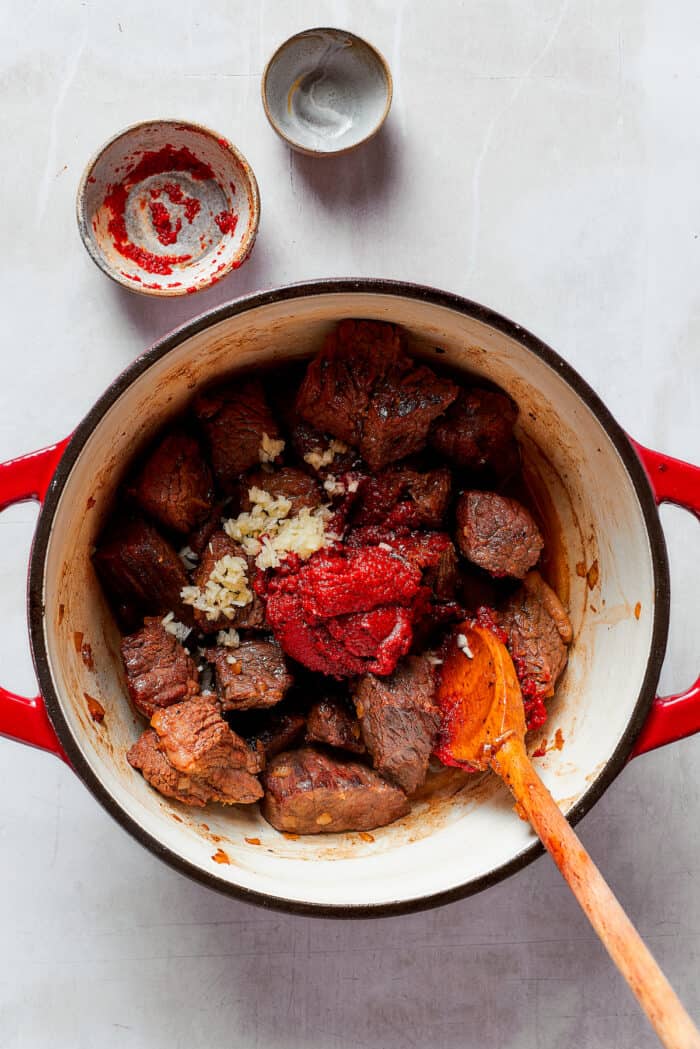
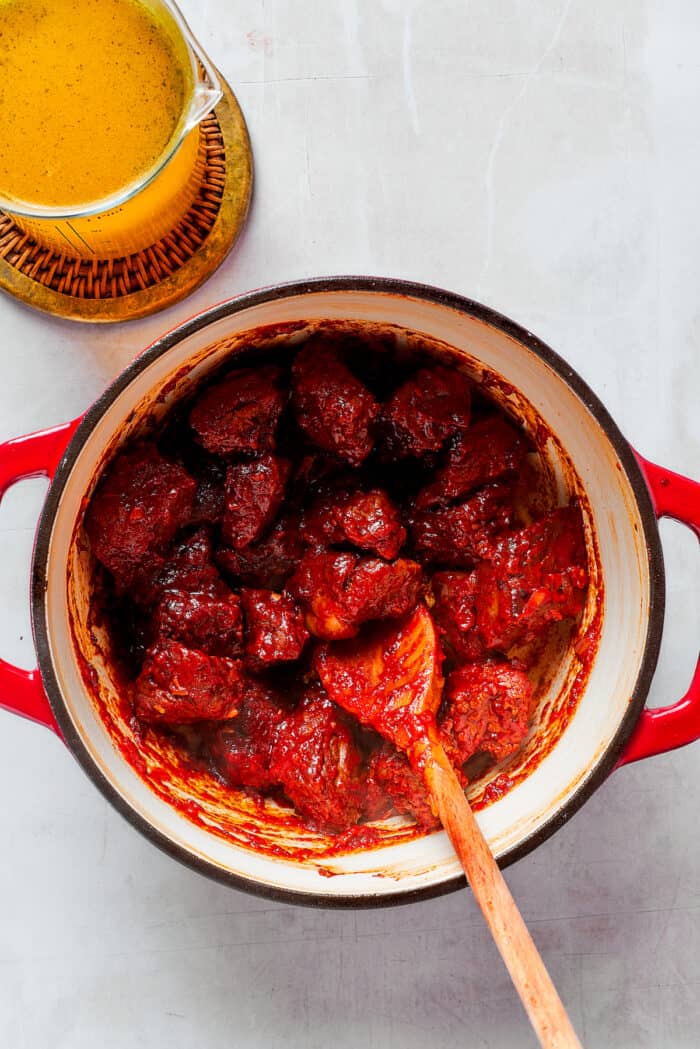
- Stir in garlic and tomato paste. Add the minced garlic and cook for another 1 minute. Stir in the tomato paste and cook for 2 minutes.
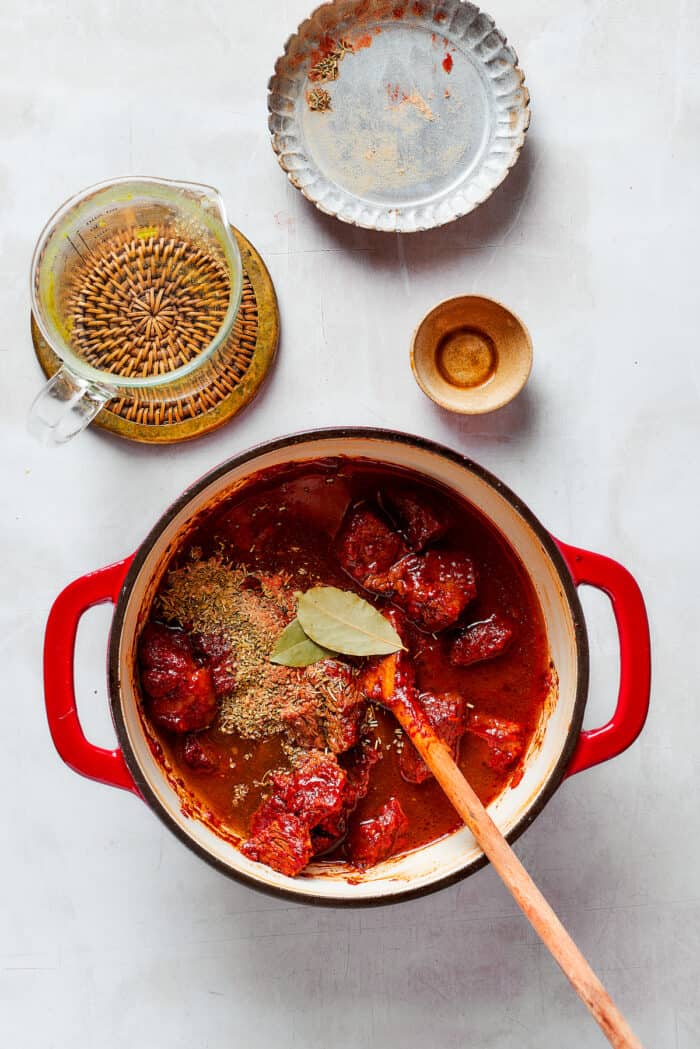
- Add broth and remaining seasonings. Stir in the beef broth and Worcestershire sauce, followed by the white pepper, smoked paprika, and dried rosemary, oregano, and bay leaves.
- Simmer. Cover the pot and let the stew simmer over low heat for about 1 hour, or until the meat is very tender.
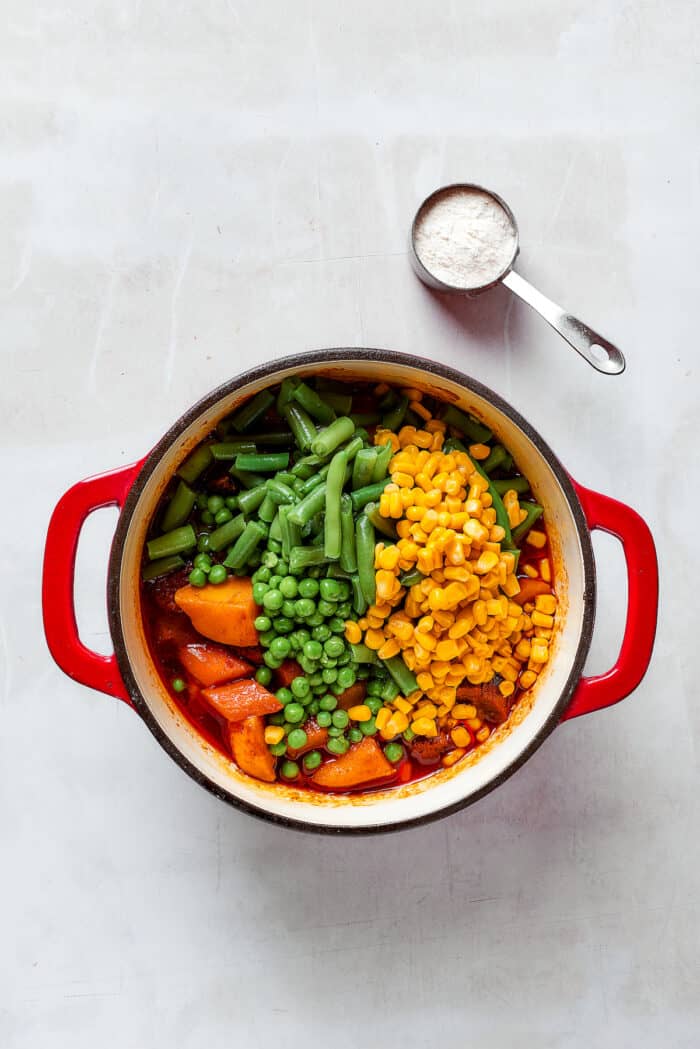
- Add the potatoes and carrots. Add the potatoes and carrots, then simmer for an additional 20-25 minutes, or until they are just tender.
- Add remaining veggies. Stir in the frozen green beans, frozen green peas, and frozen corn. Cook the stew for another 8-10 minutes, or until frozen veggies are perfectly warmed.
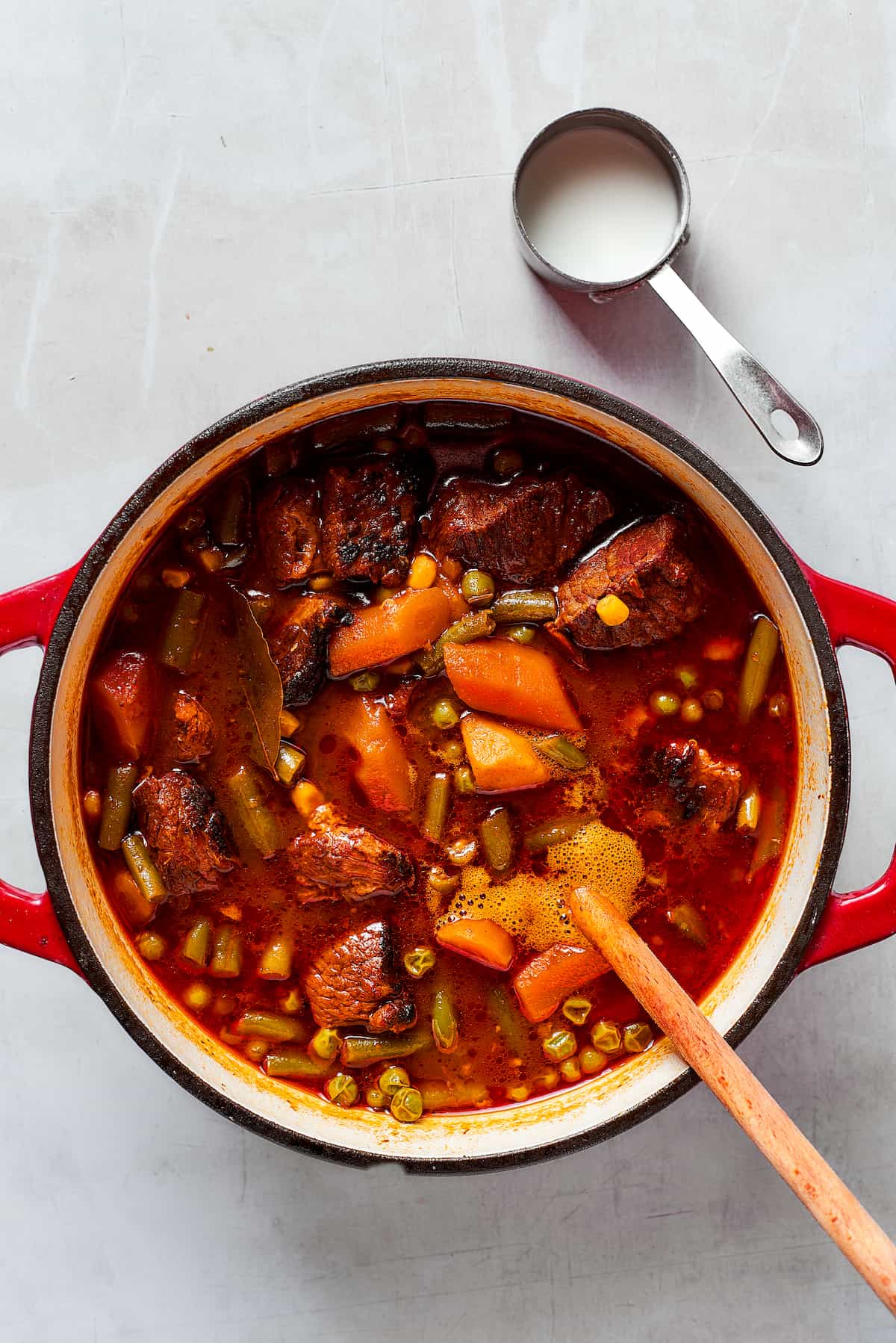
- Thicken the broth. In a small bowl, whisk the cornstarch in the water to create a slurry. Slowly pour the cornstarch slurry into the stew while stirring continuously. Let the stew simmer for 5 minutes to thicken. If you prefer a thinner broth, use less slurry or leave it out entirely.
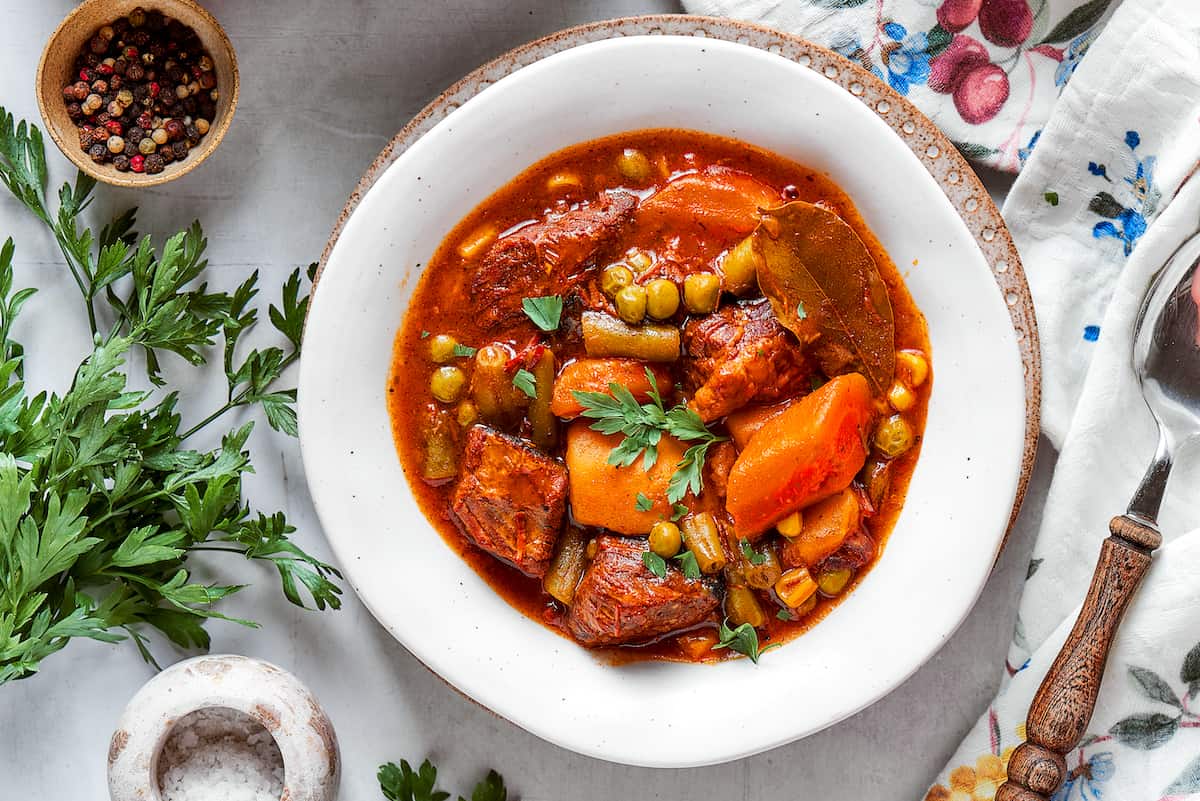
- Serve. Taste test and add more salt & pepper if needed. Remove the bay leaves. Serve hot with chopped fresh parsley to sprinkle over the top of individual bowls.
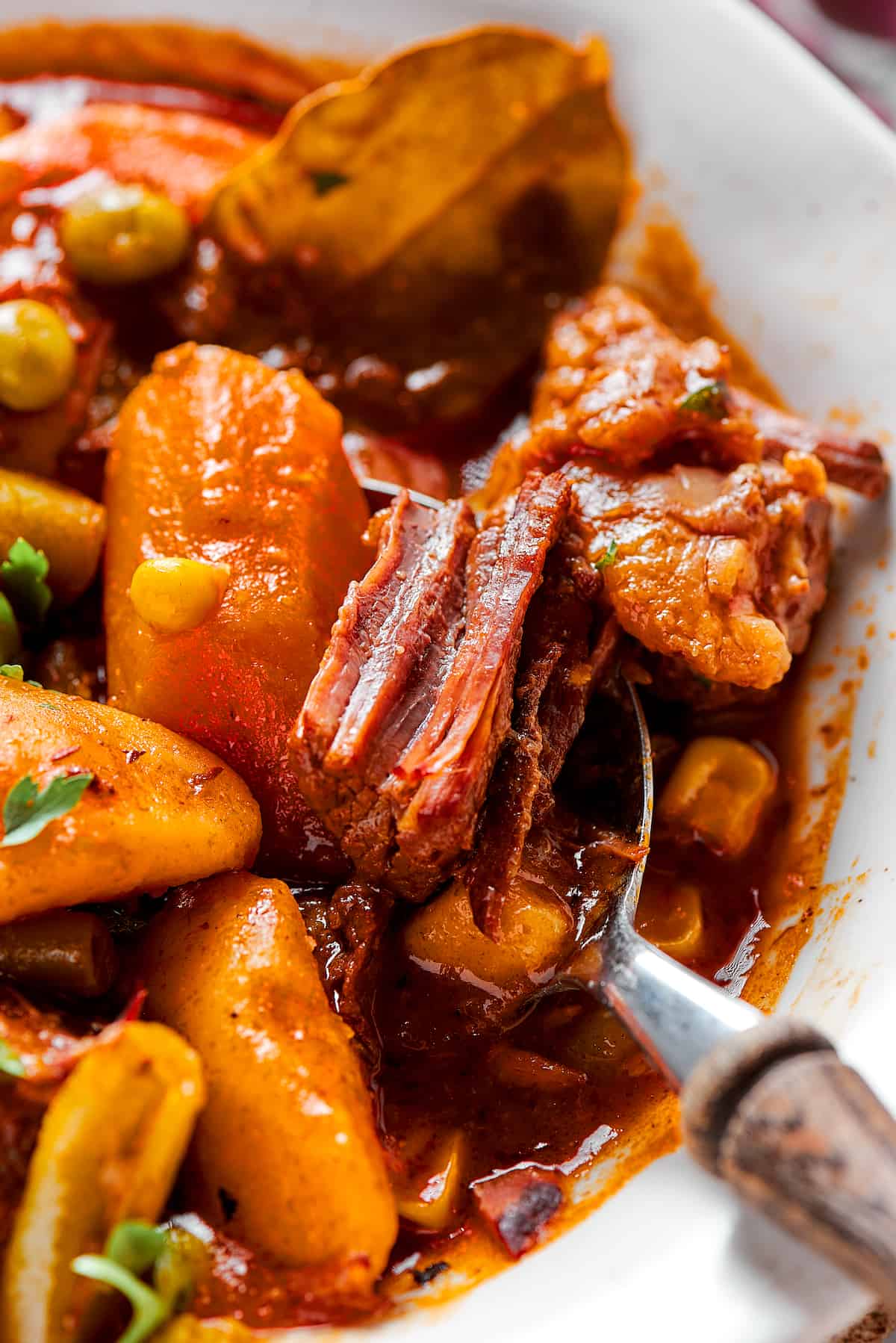
Tips for Success
Stew is a classic dish that’s easy to love. Here are a few tips to help you make this Mulligan stew turn out perfectly:
- Sear the meat. Searing the meat first forms the building block of the stew. You want all of those good meat juices to be released as they will infuse the stew with even more flavor.
- Make sure to cook the stew long enough. The long, slow simmer is what gives the stew its intense, meaty, and rich flavor. This also makes the beef very tender.
- Add the more delicate vegetables near the end of the cooking time. Adding the green beans, peas, and corn at the end of the cooking time ensures that these vegetables will not get mushy.
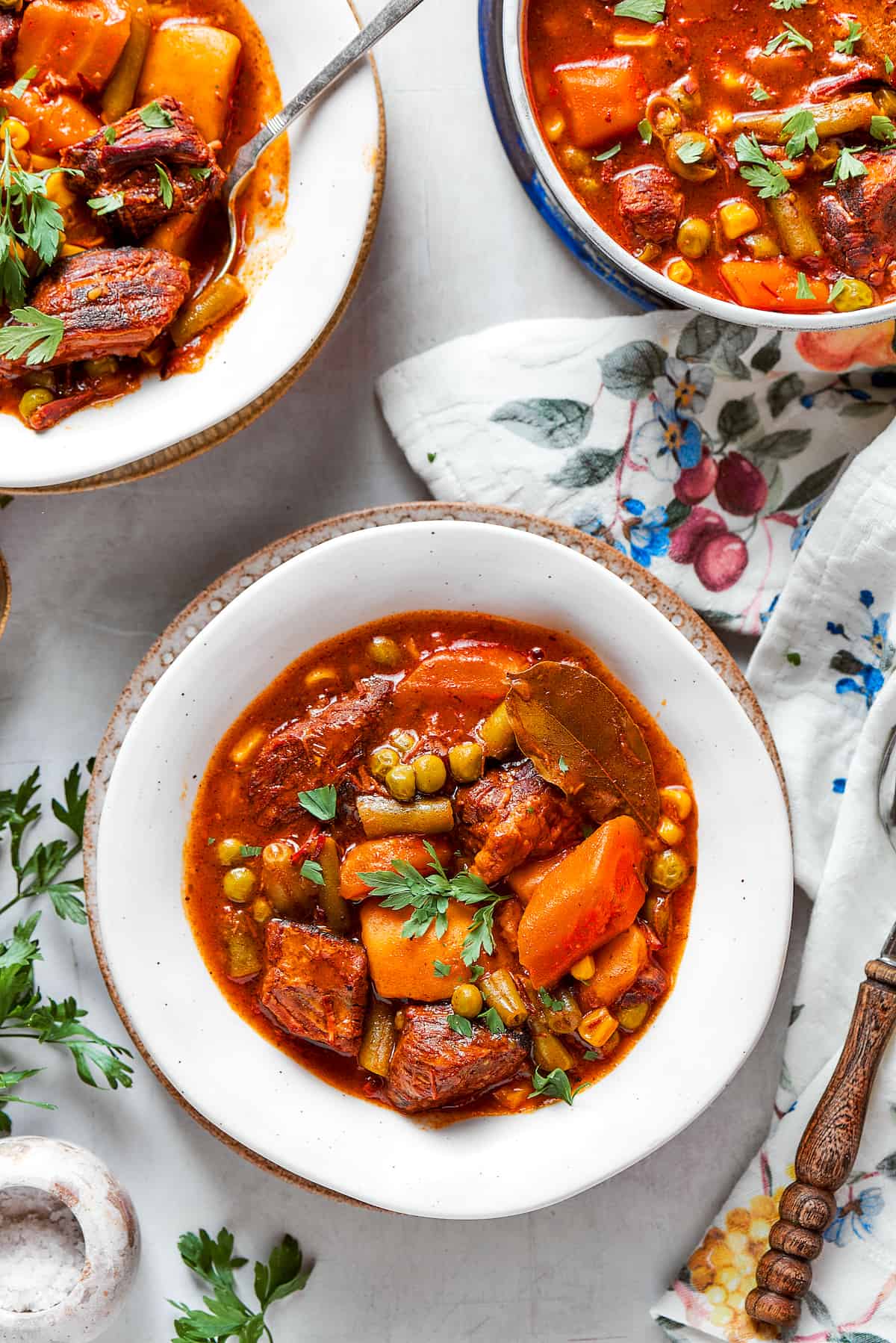
Serving Suggestions
Loaded with meat and vegetables, this stew can easily be served as a one-dish meal. But if you’d like to add to the table, here are a few ways to serve Mulligan stew:
- With biscuits, muffins, or bread. A hot bowl of stew always welcomes some bread. A fresh, crusty loaf with butter is good, as are cornbread muffins, homemade popovers, Rhodes rolls, and light-as-air biscuits!
- Add a salad. A fresh salad is a perfect side to stew. Try my winter apple salad or broccoli salad for a raw vegetable punch.
- Serve pickled vegetables. You know I love pickled vegetables! A little side dish of pickled vegetables like pickled carrots, beets, or pickled onions would provide a striking contrast to mulligan stew.
- Over noodles. You can ladle portions of Mulligan stew over wide pasta or egg noodles for an even heartier meal.
How to Store & Reheat Leftovers
Store any leftover Mulligan stew in an airtight container in the fridge for up to 4 days.
To freeze Mulligan stew, place it in a freezer-safe Ziploc bag or container, and store the freezer for up to 3 months. Thaw the stew in the fridge before reheating it.
Here’s how to reheat Mulligan stew:
- Microwave – Place a portion of stew in a microwave-safe bowl and gently heat in the microwave in 30-second increments until heated through.
- Stovetop – Place the leftover stew in a pot and heat it over medium-low heat on the stove until hot.
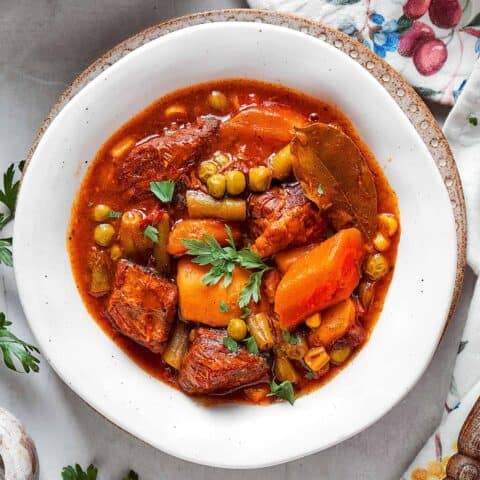
Mulligan Stew
Ingredients
- 3 tablespoons olive oil
- 1½ pounds beef stew meat cut into 1½” cubes
- 1½ teaspoons Morton kosher salt
- 1 teaspoon black pepper
- 1 medium yellow onion chopped
- 3 cloves garlic minced
- 2 tablespoons tomato paste
- 3 cups low-sodium beef broth
- 2 tablespoons Worcestershire sauce
- ½ teaspoon white or black ground pepper
- ½ teaspoon smoked paprika
- ½ teaspoon dried rosemary
- ½ teaspoon dried oregano
- 2 bay leaves
- 3 Yukon Gold potatoes peeled and cubed
- 3 large carrots peeled and chopped
- 1 cup frozen green beans
- 1 cup frozen green peas
- 1 cup frozen corn
- 3 tablespoons cornstarch dissolved in 3 tablespoons water
- Fresh parsley for garnish
Instructions
- In a large heavy pot or Dutch oven, heat the olive oil over medium-high heat.
- Add the beef to the pot. Season with salt and pepper. Sear until browned on all sides.
- In the same pot, add in the chopped onion and sauté for about 3-4 minutes, until the onion is translucent.
- Add the minced garlic and cook for another 1 minute, until fragrant.
- Stir in the tomato paste and cook for 2 minutes to enhance the flavor.
- Stir in the beef broth and Worcestershire sauce, followed by the white pepper, smoked paprika, and dried rosemary, oregano, and bay leaves.
- Cover the pot and let the stew simmer over low heat for about 1 hour, or until the beef is very tender.
- Add the potatoes and carrots and continue to simmer for an additional 20-25 minutes, or until they are just tender.
- Stir in the frozen green beans, frozen green peas and frozen corn. Let the stew cook for another 8-10 minutes.
- In a small bowl, whisk the cornstarch in the water to create a slurry. Slowly pour the cornstarch slurry into the stew while stirring continuously. Let the stew simmer for 5 minutes to thicken. If you prefer a thinner broth, use less slurry or leave it out entirely.
- Taste test and add more salt & pepper if needed. Remove the bay leaves.
- Serve hot with chopped fresh parsley to sprinkle over the top of individual bowls.

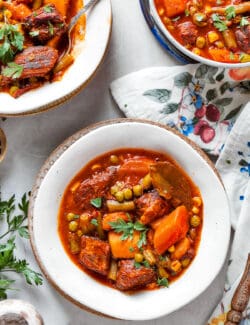
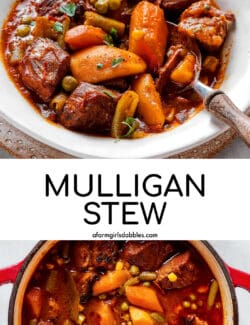
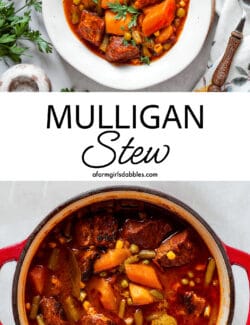
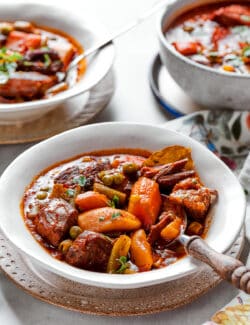
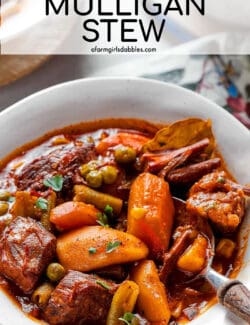
get new posts via email: